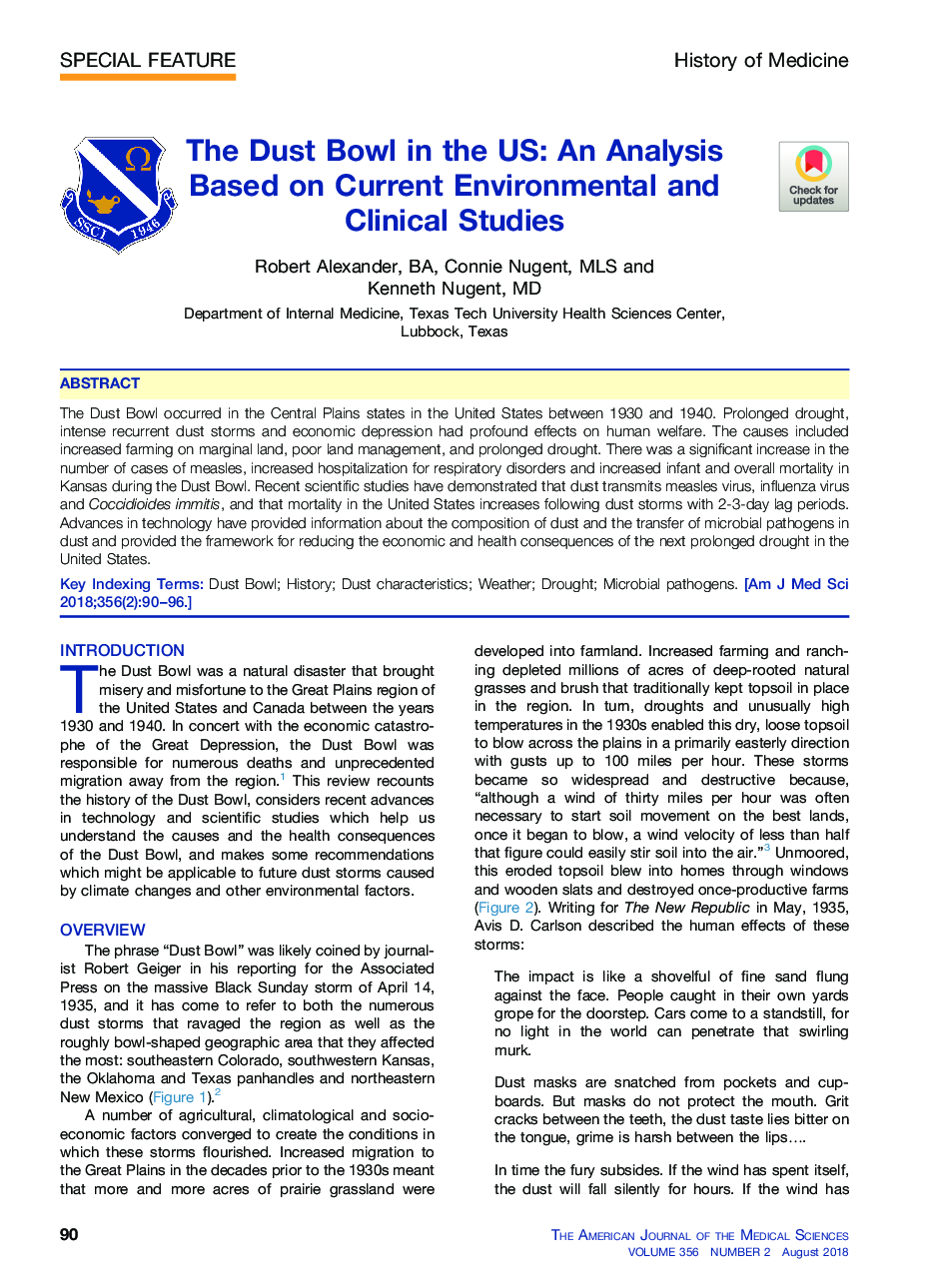| Article ID | Journal | Published Year | Pages | File Type |
|---|---|---|---|---|
| 10212803 | The American Journal of the Medical Sciences | 2018 | 7 Pages |
Abstract
The Dust Bowl occurred in the Central Plains states in the United States between 1930 and 1940. Prolonged drought, intense recurrent dust storms and economic depression had profound effects on human welfare. The causes included increased farming on marginal land, poor land management, and prolonged drought. There was a significant increase in the number of cases of measles, increased hospitalization for respiratory disorders and increased infant and overall mortality in Kansas during the Dust Bowl. Recent scientific studies have demonstrated that dust transmits measles virus, influenza virus and Coccidioides immitis, and that mortality in the United States increases following dust storms with 2-3-day lag periods. Advances in technology have provided information about the composition of dust and the transfer of microbial pathogens in dust and provided the framework for reducing the economic and health consequences of the next prolonged drought in the United States.
Related Topics
Health Sciences
Medicine and Dentistry
Cardiology and Cardiovascular Medicine
Authors
Robert BA, Connie MLS, Kenneth MD,
